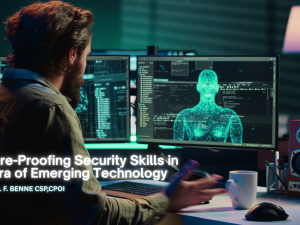Today’s technology-dependent, rapidly evolving labor market expects employees to possess current and relevant skills. Keeping pace requires on-going education.
Unfortunately, workers aren’t getting the training they need and want. As I mentioned in my last post, 70% of employees say they don’t have mastery of the skills they need to do their jobs. In that post, I also talked about how too many management teams treat employee training as an exercise in box-checking rather than a mechanism to deliver meaningful results. As a result, employees become frustrated, fail to thrive, and ultimately quit. Then, the replacement hires undergo the same superficial, ineffective training, and the cycle continues.
We’ve defined the problem. Now, let’s focus on the solution.
Understanding Learning and Forgetting Curves
Most people are familiar with the concept of a learning curve. It’s a graphical representation of how performance progresses over time as a student learns and practices. Easy-to-master repetitive activities, like data entry, show fast initial gains that quickly level off. More complex tasks have wiggly learning curves, where students progress significantly, then taper off while skills sink in before the curve tics upward again. Management understands that learning curves differ by subject, and some training takes longer before workers reach acceptable proficiency.
Fewer people are familiar with the forgetting curve, but it’s even more important than the learning curve when desigining effective training programs.
The forgetting curve was developed by psychologist Hermann Ebbinghaus, whose experiments over a century ago showed that human memory retention drops quickly and dramatically after learning new information. People forget 50% of what they’ve learned within an hour of training, 75% in six days, and 90% after a month. Therefore, useful training programs require reinforcement of previous lessons as new information is taught. Imagine the futility of trying to learn a foreign language if you only focused on new vocabulary during every class.
In addition, skill reinforcement requires practice and follow-up after the initial training concludes. You may have taken four years of high-school Spanish, but how much did you retain just a few years after graduation if you never spoke it? A one-time class, regardless of its length, will not be effective if the skills taught are not integrated into a worker’s routine and supplemented with refresher courses and new, updated material over time.
Types of On-Going Training
There are several proven approaches that advance learning outcomes. They include:
Physical Exercise: Physical repetition of tasks, building in complexity, reinforces muscle memory so that required actions can be executed more quickly and with less effort.
Successive Learning: Revisiting and practicing tactical skills and procedural protocols over spaced sessions is effective for developing complex skill sets that build upon each other.
Spaced Practice: Studies have shown that frequent short learning sessions are more effective than longer, less frequent sessions. Frequent sessions help transfer knowledge to long-term memory, resulting in superior recall and retention.
Security Industry Application
Ignoring the realities and consequences of the forgetting curve is perilous in the security industry. Employees who don’t remember what was taught may fail to identify, mitigate, or respond to a security threat as their job requires.
For example, let’s look at video management systems (VMS). At the most basic level, security guards engage with a VMS while sitting at their post, watching a grid of rotating surveillance views. By all accounts, it’s a pretty dull job.
So, what happens when a severe threat arises, like protesters storming the building? The situational awareness derived from VMS is critical to coordinating the security team’s response. Can the guards quickly search for video clips based on specific parameters? Can they export video to share with law enforcement?
The guards may have learned how to use more sophisticated features of the VMS platform, but that was a while ago, and the steps have not been practiced since. Plus, the guards are now under pressure. Even if they recall some of what they learned, their navigation of the VMS menus will be slow, with some trial and error, rather than the seamless operation that comes with muscle memory. With threats coming from multiple directions, how do they make sense of the situation and prioritize action steps? They have little or no practice making crucial judgment calls in stressful emergencies. Imagine how much more confidently they could respond if theses skills had been reinforced through regular training.
Active shooter and de-escalation training also require practice, and reinforcement. You hope your team will rarely need these skill sets, but if they’re not practiced frequently, they’ll get rusty and fail to deliver when most needed. I could mention many other examples, but they all follow this same pattern. Without on-going training, security teams are ill-prepared to deal with crisis.
Training Resources
The most obvious person to train an employee is that employee’s manager, but managers don’t always have the learning and development knowledge and experience to do it effectively. Management training can help those in leadership positions to be better mentors to their subordinates, but teaching specific skills – in depth – may not be the best use of the manager’s time.
Fortunately, training is readily available through professional organizations like ASIS, SIA, PSA, ESA, and others. Certain licensed employees must earn continuing education credits to maintain their status, but all workers benefit when required to keep skills current – and offered educational resources to do so. Eligibility for such training is a perk of professional association membership.
Training is available elsewhere, too. Equipment manufacturers offer certification courses on their technologies. System integrators typically include customer training with the systems they install. Security consultants are staffed with industry experts who can provide customized training courses based on an organization’s specific needs and align that training with broader risk management initiatives.
In short, don’t let the grim statistics on the state of training deter your organization’s efforts to implement an effective L&D program. The reasons that training is often ineffective can be overcome by focusing on how employees learn and why they forget. With repetitive, reinforced learning and continuing education, your security team members will be equipped to perform optimally, even in adverse conditions, using the full range or resources at their disposal.







